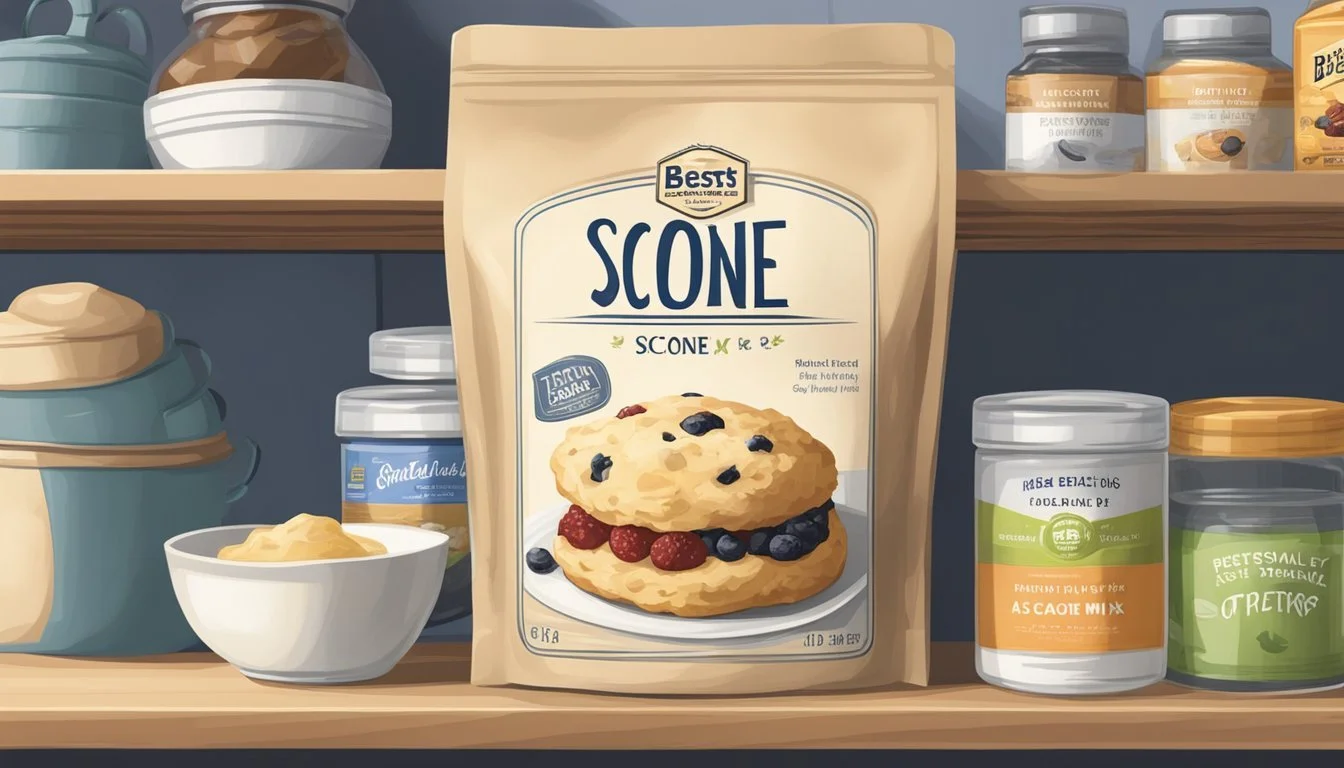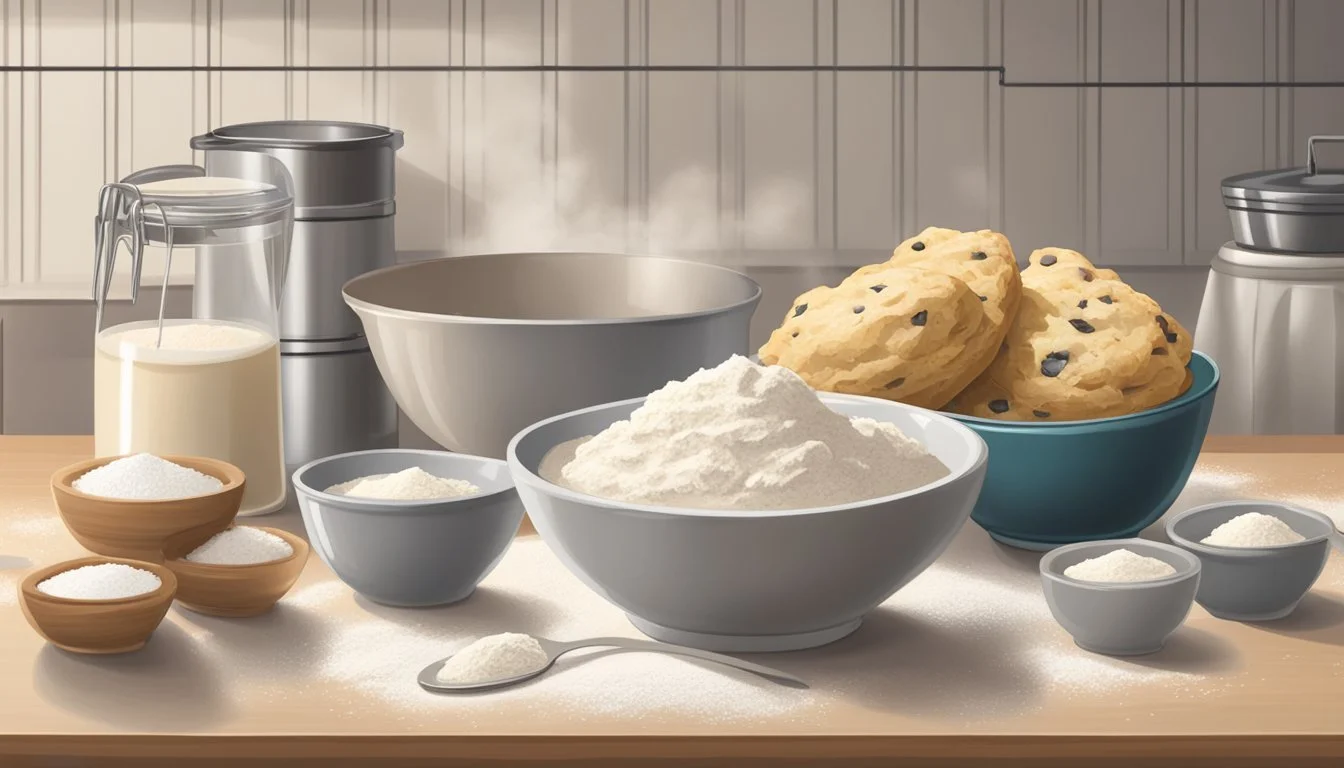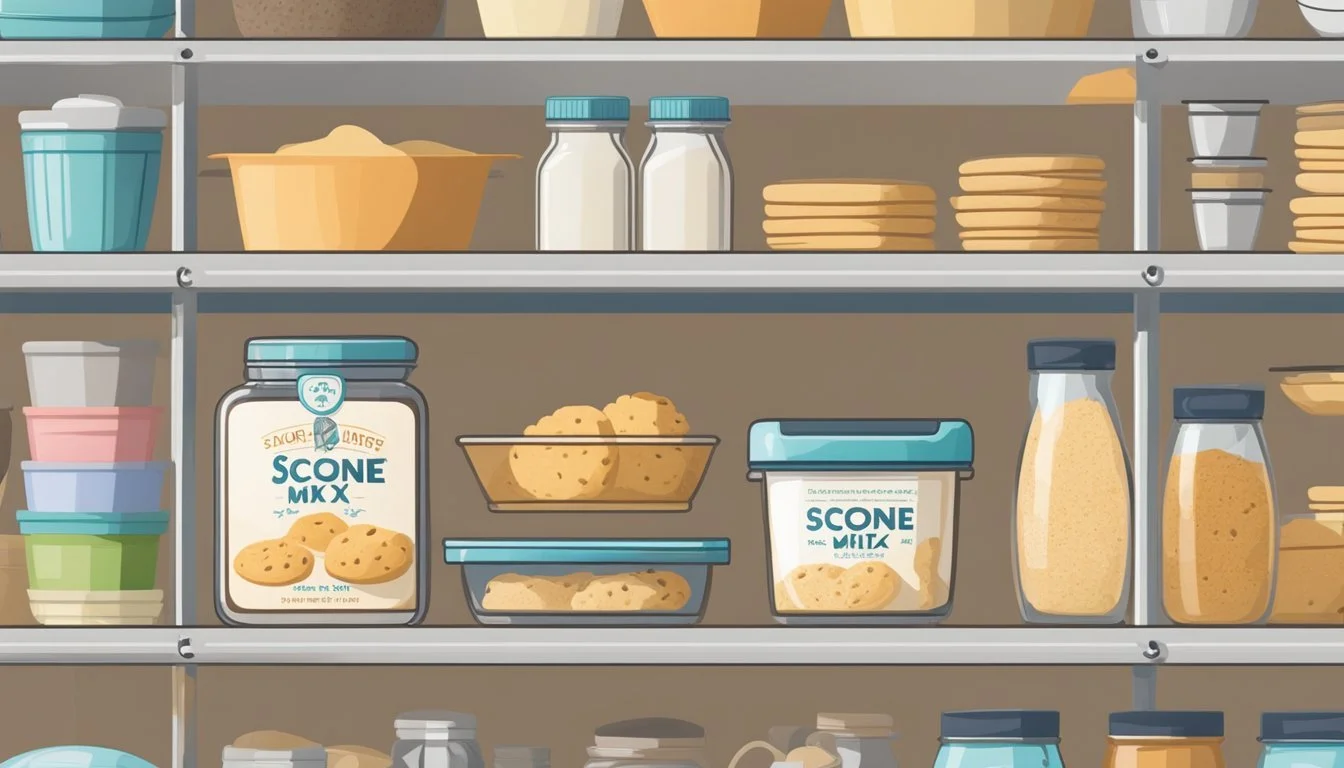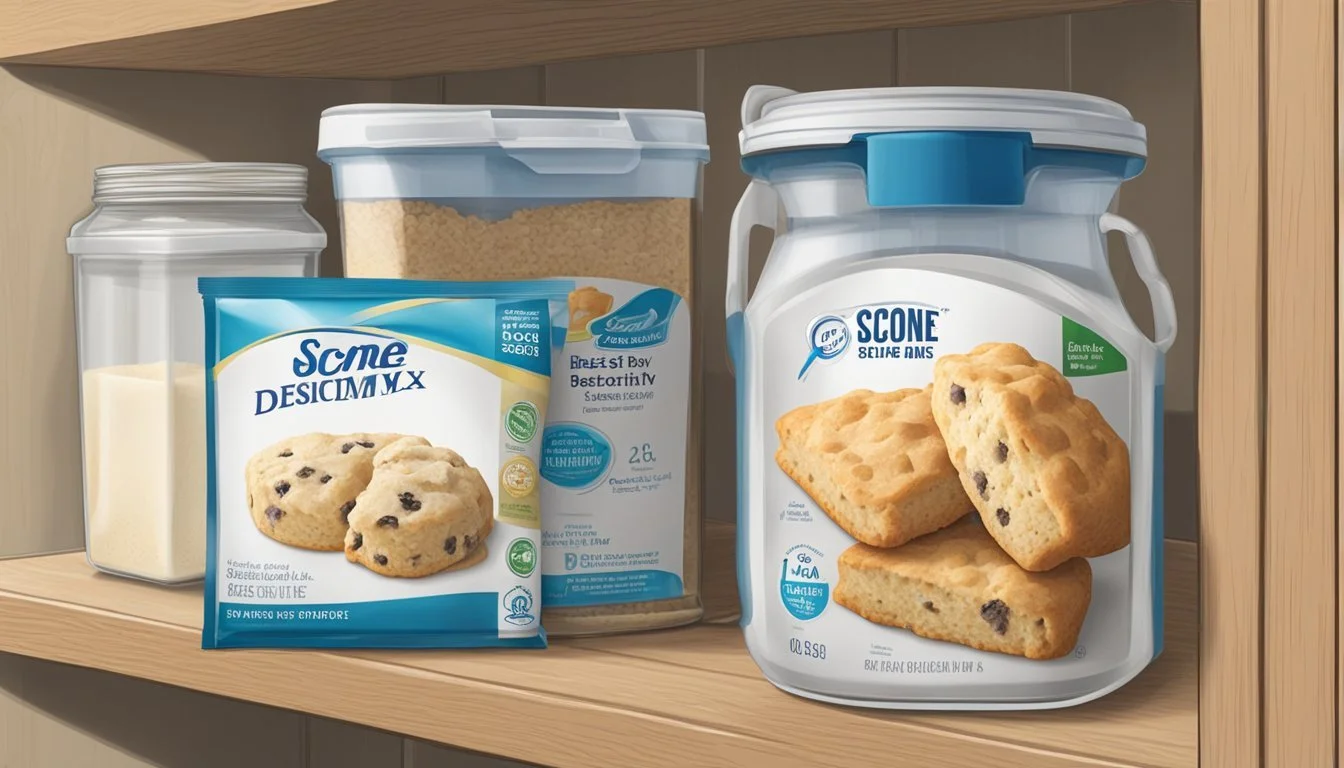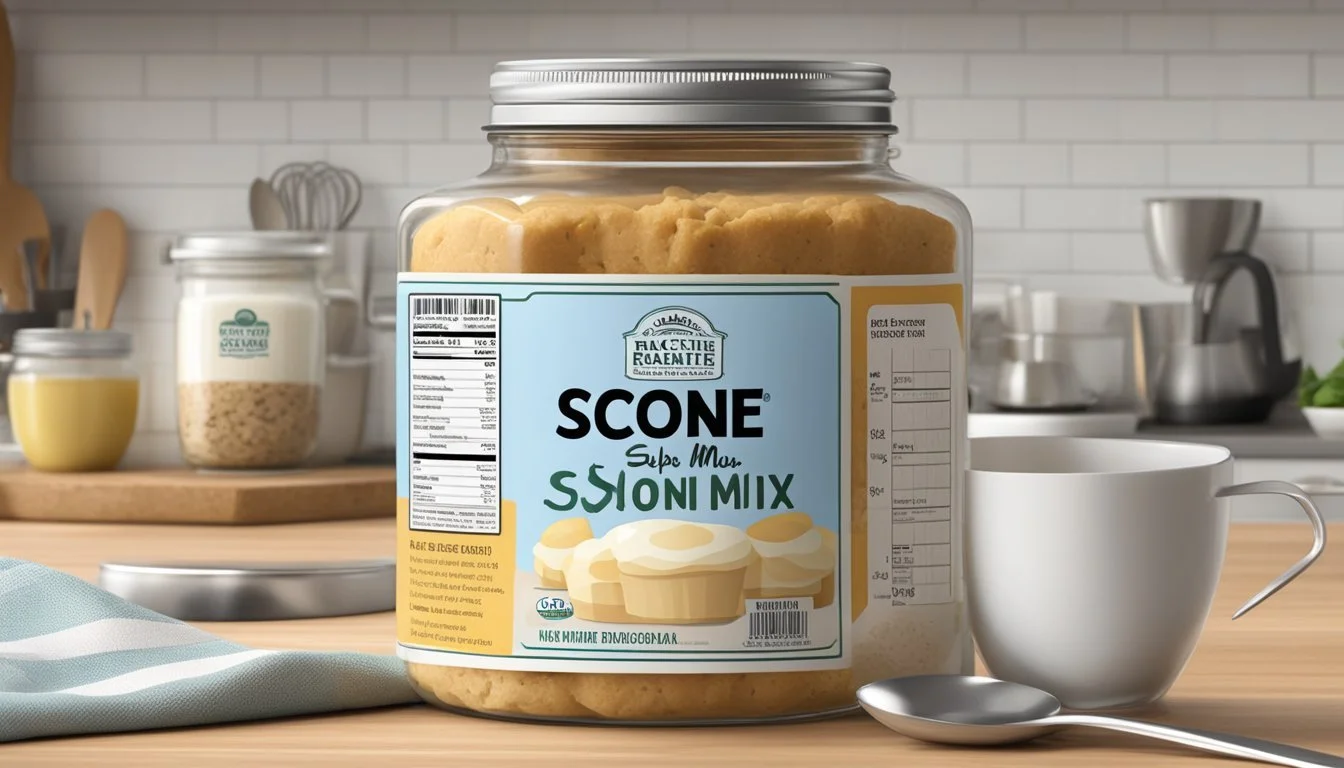How Long Does Scone Mix Last?
Shelf Life and Storage Tips
Determining the shelf life of scone mix is essential for both avid bakers and those who bake occasionally. The longevity of the scone mix can vary based on several factors including the ingredients used and the storage conditions. Typically, a commercially packaged scone mix has a longer shelf life due to preservatives, often lasting until the printed expiration date if kept in a cool, dry place. Homemade scone mixes, on the other hand, may have a shorter shelf life due to the lack of preservatives, usually lasting a few weeks up to a month when properly stored in an airtight container.
When considering how long scones last after being baked, the key to maintaining freshness is proper storage. Freshly baked scones (how long do freshly baked scones last?) are best enjoyed within 1-2 days when stored at room temperature in an airtight container. However, if the scones contain ingredients that perish quickly, like fresh fruit or cheese, it's advisable to consume them within 24 hours. To extend their freshness, scones can be stored in the refrigerator for up to one week or frozen for up to three months, making sure to wrap them tightly to prevent freezer burn and preserve moisture.
It's important to note that the quality of ingredients in the scone mix can affect both the mix's shelf life and the finished product's taste and texture. Using high-quality butter in the mix, for example, can enhance the flavor significantly. Nevertheless, whether one is using a store-bought mix or making it from scratch, careful attention to the storage recommendations can help ensure that the scones remain as delightful as the day they were made.
Understanding Scone Mix
When it comes to scone mix, the longevity and quality depend on its ingredients and the type of mix used. A proper blend assures a good base for scones with the desired texture.
Components of Scone Mix
Flour: Scone mixes typically use all-purpose flour or pastry flour as the base. The protein content in the flour affects the gluten formation and therefore the texture of the scones. All-purpose flour is most commonly used, providing a balance between soft and firm textures.
Baking Powder: A leavening agent like baking powder is essential to help the scone rise. It reacts to moisture and heat, causing the dough to expand and become airy.
Fat: Butter is crucial in scone mixes for flavor and to create flakiness. When the cold butter melts in the oven, it leaves pockets in the dough that result in a light and tender crumb.
Other Dry Ingredients: Depending on the recipe, scone mixes may also contain sugar for sweetness, a touch of salt for flavor enhancement, and sometimes dried fruit or nuts for additional texture and flavor variance.
Types of Scone Mix
Traditional Scone Mix: A plain scone mix usually includes the basic ingredients like flour, sugar, baking powder, and salt. It allows for versatility as bakers can add their choice of extras like berries or chocolate chips.
Specialty Scone Mix: These mixes come with added flavors or ingredients such as herbs, cheese, or fruits. They are tailored for those who wish to bake a specific type of scone without needing additional flavor elements.
Gluten-Free Scone Mix: For those with gluten sensitivities, gluten-free scone mixes are available. They use gluten-free flour alternatives like rice flour (how long does rice flour last?) or almond flour to match the texture and taste of traditional scones, without the gluten protein.
By understanding the components and types of scone mix, one can better determine the potential shelf life and storage requirements, ensuring delicious results every time they bake.
Optimal Storage Methods
Effective storage methods are essential to maintaining the quality and extending the shelf life of scone mix and baked scones. Proper techniques differ for unbaked scone mix and baked scones, but both aim to preserve texture and flavor.
Storing Unbaked Scone Mix
For unbaked scone mix, it should be kept in a cool, dry place to prevent any moisture from causing the ingredients to activate before baking. A pantry or a cupboard away from heat sources is ideal. To ensure freshness, store the mix in an airtight container. This will prevent any external odors or humidity from affecting the mix. Unbaked scone mix typically remains fresh for up to a month, following these guidelines.
Storing Baked Scones
Once scones are baked, they are best enjoyed fresh, but storage is key to preserving them if they cannot be consumed immediately. For short-term storage, scones can be kept at room temperature for approximately 1-2 days. They should be placed in an airtight container lined with paper towels to absorb any excess moisture. For longer-term storage, the refrigerator extends their freshness for about a week. The following methods are recommended:
Room Temperature: Place in an airtight container or wrap with plastic wrap.
Refrigerator: Store in a container with a sheet of paper towel on the bottom to absorb moisture.
Freezer: Wrapped individually in foil or plastic wrap, then placed in a freezer bag, baked scones can last up to three months.
When using the freezer, it's important to label the container or bag with the date to keep track of how long the scones have been stored. This ensures that they are enjoyed at their best quality within the storage timeline.
Freshness and Shelf Life
Understanding the factors affecting freshness and determining the accurate shelf life of scone mix is crucial for both taste and safety.
Freshness Factors
When assessing the freshness of scone mix, one should consider whether the product has been kept in a sealed package at room temperature and away from humidity and light. A scone mix kept in these optimal conditions will retain its quality for longer periods. The inclusion of preservatives in some brands such as King Arthur Scone Mixes can also extend freshness.
Determining Shelf Life
Shelf life varies based on the storage conditions:
Room Temperature: An unopened package of scone mix typically lasts until the printed expiration date, but it's best used within a few months for optimal taste.
Refrigeration: Not commonly recommended for dry scone mixes as moisture can affect texture and taste.
Freezing: Can extend shelf life if the package is unopened and well-sealed. However, it is advisable to use the mix soon after thawing to ensure best results.
For freshly baked scones, shelf life is shorter:
Room Temperature: Consume within 1-2 days.
Refrigeration: Can last up to 1 week.
Freezing: Freshly baked scones can be frozen and last up to 3 months, maintaining much of their quality if properly stored in airtight containers or wraps.
It's always best to consult the specific guidelines on the scone mix package for the most accurate shelf life information.
Preparation and Baking Tips
When making scones, maintaining the integrity of ingredients and technique ensures a flaky, tender outcome. It's essential to handle the dough correctly and bake it at the right temperature.
Mixing and Handling Scone Dough
Proper technique begins with mixing the scone dough. One should start by selecting cold butter; its solidity is crucial for creating a flaky texture, as it creates steam pockets during baking. The ingredients -- including flour, a leavening agent like baking soda, sugar, and salt -- are typically combined before adding the cold butter. A pastry cutter or two knives can be used to cut the butter into the dry mixture until it has a crumbly texture.
When incorporating wet ingredients like cream or buttermilk, they should be as cold as possible. One adds these to the dry ingredients and mixes them gently, until just combined. Overmixing at this stage can result in a tough scone, since it develops the gluten too much. If fruit or other mix-ins are being used, they should be folded in carefully after the wet and dry ingredients are just combined.
To avoid adding excess warmth from the hands, many bakers recommend using utensils or dough scrapers to mix, only using hands for a final brief knead if necessary. The dough should be shaped lightly on a floured surface, maintaining a delicate touch to preserve the pockets of fat that ensure a flaky texture.
Baking Perfect Scones
The oven should be preheated to a high temperature – typically around 425°F (218°C) – before the scones are placed inside. This high initial temperature helps to quickly expand the layers of fat and liquid, creating that desired flaky rise.
Before baking, the scone dough should be portioned and shaped. This can mean pressing the dough into a circle and cutting it into wedges, or using a cutter for rounds. The scones are then transferred onto a baking sheet, often lined with parchment to prevent sticking. Some recipes may recommend brushing the tops with more cream or a wash of beaten egg to help achieve a golden color.
One must not over-bake the scones; they should have a light golden-brown hue, not dark brown, which would indicate dryness. Baking time typically ranges from 18 to 23 minutes, and checking for doneness can be done by lightly breaking one scone open to ensure it is moist but not wet inside.
If scones cannot be consumed immediately, they can be frozen after shaping and before baking. Place them on a baking sheet and freeze until solid, then transfer to an airtight container or bag. They can be baked straight from frozen; just add a few extra minutes to the baking time.
Serving and Accompaniments
Scones offer versatility in serving, pairing exquisitely with a range of toppings and spreads for breakfast or brunch. It's pivotal to select complements that enhance the rich flavors and delicate texture of both cream and butter scones.
Scone Toppings and Spreads
Scones can be elevated with a variety of spreads, transforming them from simple baked goods to delightful treats. A traditional serving often includes:
Jam: A classic choice, from sweet strawberry to tangy lemon curd, adding a fruity burst to each bite.
Clotted Cream: A rich, indulgent spread that provides a creamy contrast to the crumbly scone texture.
Butter: For simplicity, a pat of butter brings out the baked-in flavors, especially in butter scones.
Heavy Cream: Whipped lightly, it acts as a softer, fluffier alternative to clotted cream.
Glaze: For a sweetness enhancer, a glaze made from confectioner's sugar with lemon juice or vanilla adds a glossy finish.
Serving Suggestions
Scones are fitting for various occasions, whether one is hosting a refined afternoon tea or enjoying a casual morning meal. Here's how they can be served:
Breakfast: Accompany scones with a hot coffee or tea, complemented by butter or a light glaze.
Brunch: Create a scone platter with an assortment of jams, cream, and fresh add-ins like strawberries or herbs, allowing guests to customize their servings.
Add-ins and Fillings: Enhance the scones with cinnamon, vanilla, or lemon juice, baked directly into the dough for added depth of flavor.
Selecting the right accompaniments can turn the simple act of eating a scone into a delightful culinary experience, punctuating the taste with sweet, creamy, or fruity notes that satisfy the palate.
Longevity Enhancements
To ensure that scone mix maintains its freshness for as long as possible, one should consider freezing techniques and effective ways to protect the mix against moisture and air. These methods help to preserve the mix's texture and taste.
Freezing Techniques
Freezing scone mix can significantly extend its shelf life. The mix should be stored in airtight containers or wrapped securely in cling film followed by aluminum foil to protect against freezer burn. This method keeps the mix usable for up to three months. One must ensure to label the container with the date of freezing to track its longevity.
Protecting Against Moisture and Air
Moisture and air are the enemies of freshness for scone mixes. To protect against these, the mix should be stored in a cool, dry place. Using sealable plastic bags or airtight containers can prevent moisture from seeping in and keep the mix from absorbing odors. It's recommended to squeeze out any excess air before sealing the bag to maintain optimal freshness.
Safety and Spoilage Prevention
Ensuring safety and preventing spoilage are paramount when storing scone mix. By recognizing the signs of spoilage and adopting best storage practices, one can maintain the freshness and safety of the scone mix.
Spotting Spoilage Signs
Mold Growth: If one observes fuzzy, green, or black spots on the scone mix, it is an indication of mold contamination.
Off Odors: A sour or off smell emanating from the scone mix suggests that it may have spoiled.
Change in Texture: Scone mix that clumps excessively or has altered texture could be compromised.
Best Practices to Prevent Spoilage
Proper Storage: Seal the scone mix in an airtight container and store it in a cool, dry place to extend its shelf life.
Control Moisture: Moisture is an enemy of freshness; using desiccants or keeping the mix away from humid conditions can be effective.
Check Dates: Regularly check the expiry date and ensure usage within the recommended period to guarantee freshness and safety.
Alternatives to Scones
When considering alternatives to scones, one can explore a range of baking mixes that each offer distinct flavors and textures. These alternatives provide variety for those who enjoy home-baked goods but are looking for something different from the traditional British or American scone.
Comparing Scone Mixes to Other Mixes
Biscuit Mix: Biscuits, with their flaky texture and buttery flavor, are often confused with scones. However, biscuit mix typically requires less sugar and sometimes includes leavening agents, which result in a lighter creation.
British Scone vs. Biscuit Mix: British scones are usually less sweet and drier compared to the fluffiness of biscuits.
American Scone vs. Biscuit Mix: American scones are sweeter and often contain fruit or nuts, differing from the simpler, savory biscuit.
Cookie Mix: Cookie mix is designed for sweets that are denser and chewier than scones. The ratio of ingredients like sugar and fat is higher, which produces a distinctly different texture and taste.
British Scone vs. Cookie Mix: British scones are generally not as sweet or as rich as cookies.
American Scone vs. Cookie Mix: Though American scones can be sweet and rich, cookies are typically more indulgent in flavor and texture.
Cake Mix: A cake mix results in a moist and airy crumb, differing from the denser texture of scones. The ingredients in cake mix often include a creaming agent, which gives cakes (how long do cakes last?) a lighter texture.
Scone Mix vs. Cake Mix: Scone mix requires minimal mixing and generally produces a denser baked good than the fluffy nature of cakes derived from cake mixes.
Bread Mix: Bread mixes are formulated to create loaves with a chewy texture and crust, which significantly differs from the tender crumb of a scone.
Scone Mix vs. Bread Mix: Bread mix is more savory and less sweet than scone mix, preparation often involves kneading and longer baking times.
Pancake Mix: Pancakes are known for their light and fluffy texture, achieved with a mix that is much different from scone mix, containing more liquid and often used on a griddle.
British/American Scones vs. Pancake Mix: Unlike scone mixes, pancake mix is not meant for the oven, and the final product has a distinctly different texture and method of preparation.
Muffin Mix: Muffins are similar to scones but typically have a moister crumb and can contain a similar range of mix-ins like fruits or nuts.
British Scone vs. Muffin Mix: Muffins are often more cake-like than British scones.
American Scone vs. Muffin Mix: American scones and muffins can be quite similar in sweetness and add-ins, but they differ in texture and shape.
By understanding the differences in these mixes, consumers can make informed decisions and select the most fitting alternative to scones based on their desired outcome.
Nutritional Information
When assessing the nutritional value of scones, it is critical to examine their caloric content and nutrient composition. Scones are a source of energy, and their nutritional makeup can vary depending on the ingredients used.
Caloric and Nutritional Content of Scones
The caloric and nutritional content of scones can differ based on the recipe. However, a typical scone will have the following approximate values per serving:
Calories: Ranges from 150 to 300 calories per scone
Protein: About 2 to 5 grams
Fat: Ranges from 5 to 15 grams, with a blend of saturated and unsaturated fats
Sugars: Generally contains 5 to 10 grams
Vitamin A and Vitamin C: Minimal amounts; can be slightly higher when fruit additives like blueberries or citrus zest are included
Nutrition Table per Average Scone:
Nutrient Amount Calories 150-300 Protein 2-5g Fat 5-15g Sugars 5-10g Vitamin A Trace Vitamin C Trace
The actual caloric and nutrient content should be verified based on the specific recipe and the size of the scone. If the scones include additional ingredients such as cheese, fruits, or nuts, these values may increase accordingly. It's important to consider these variations when determining the overall nutritional impact of scones in one's diet.


